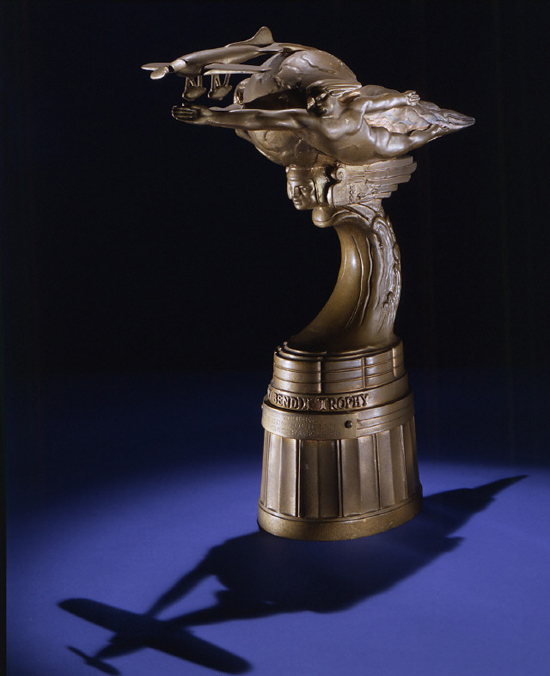Need for Speed
Vincent Bendix wanted his trophy to spur better and faster airplanes, and he got his wish.
It was 50 years ago, in 1962, that the last of the original Bendix Trophies was awarded to the U.S. Air Force for a speedy dash from Los Angeles to New York in a supersonic Convair B-58A Hustler. The crew of three – pilot, navigator and defensive systems operator – made the transcontinental trip in two hours plus almost a minute, averaging over 1,200 miles per hour. In the early days, most of the annual races began in Los Angeles but ended in Cleveland, which was the site of the national air races around a closed course. Later on, they extended it to New York City.
Vincent Bendix, an inventor who came up with a key part of an automobile’s electric starter and was later a manufacturer of automotive brakes, wanted the trophy to serve as a spur to faster and better airplanes, and he got his wish. Jimmy Doolittle took home the first trophy and a check for $7,500 with a winning speed of 223 mph. The races were suspended during World War II, and Bendix died before he could see them resume in 1946, when Paul Mantz took home $10,000, winning at 435 mph in a P-51 Mustang. Once the jets took over, propellers faded and did not run after 1949.
Honeywell acquired the Bendix name and assets in 1982, and reinvented the trophy in 1998 as an award for safety, which was, in a way, the opposite of the original purpose. Although Doolittle and Roscoe Turner and some of the rowdies of the early days thought safety was important, most of that generation thought speed was the paramount characteristic of airplanes.
The trophy (above) resides at the National Air and Space Museum, and to me, it’s one of the handsomest racing trophies ever. Incidentally, video of the B-58, the four-engine jet bomber that won the last of the races, is extremely rare, but you can watch a brief appearance by one in a clip from an old newsreel on YouTube. The Hustler gets just a few seconds on stage during an Air Force demonstration in which various combat aircraft put a hurt on the desert at Nellis Air Force Base outside of Las Vegas in 1959:
